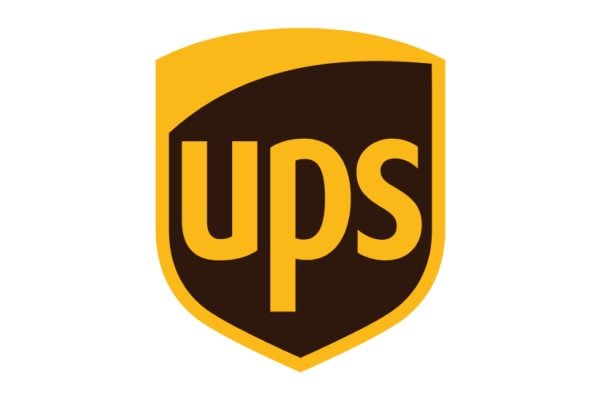eBay are rapidly expanding the number of categories with the mandatory listing using eBay Catalogue data, which is intended to make it easier for buyers to find the products that they’re looking for. However compared with Amazon they still have a long way to go until the entire site is catalogued.
Over the weekend an interesting post appeared on the eBay Tech Blog comparing a “product” with an “item”. They explain the difference between a product and an item as “Suppose seller A on eBay is offering item X and seller B is offering item Y. You purchase both of them. When they arrive, you throw away the shipping containers they arrived in. If you now can’t tell which is X and which is Y, then these items are the same product.”
What’s really interesting is that they do an indepth comparison between the way ecommerce sites categorise items as products with Amazon’s ASIN system. As the ASIN is proprietary to Amazon the only way other sites can link items to products is with ISBN codes for books, and EAN or UPC codes for other products.
Where the post becomes really interesting is when item’s UPC codes are not known or if a product apparently has two valid UPC codes attached to it. Then of course there are products such as clothing which aren’t barcoded or assigned UPC codes in the first place – how do you categories these in a catalogue.
One way could be to build catalogue data for generic products, for instance a mens formal shirt will have certain attributes which could be it’s a “Blue”, “Striped”, “Button Down Collar”, “Single Button Cuff” shirt with a “Breast Pocket”. Whilst the brand may vary between shirts it’s still possible in theory to catalogue clothing items.
The biggest issue for eBay will be when a seller tries to list an item for which there just isn’t a matching product in eBay’s catalogue. For Amazon this is fairly straightforward as sellers can create new ASINs as required. There currently isn’t any such process on eBay.
Even Amazon have problems with their catalogue, there are many products with duplicate entries and two ASINs where there should only be one. There are also issues where Amazon sellers create an ASIN for a generic product and then try to protect it from other sellers listing on that ASIN.
I’ve heard cases where sellers add a sticker with their User Id on a generic product and then claim it’s a branded item to prevent other sellers benefiting from their sales history. eBay currently avoids this by building their catalogue data from external sources but that precludes sellers from adding to the catalogue as new products come onto the market. New products could be as basic as Apple releasing an iPod in a new colour, until eBay’s catalogue is updated sellers can’t list the new colour products using the mandatory catalogue data.
Which method do you prefer when listing either on a marketplace or on your own website. Do you tend to list “Items” which are specific to you, or would you prefer a world where the listing process is “Product” based and you’re listing against an existing product catalogue?
There’s no doubt for buyers that being able to compare prices and service for a product is the simplest way to buy, but for sellers product catalogues bring their own set of problems which don’t occur when simply listings items.









12 Responses
Anything that is not absolutely new in a sealed box or tagged or whatever other means is used to identify new unused merchandise clearly cannot be a product using the definition above.
Therefore eBay should limit its mandatory catalogue to absolutely new items only.
Anything used is unique and therefore an item.
Really eBay should split itself into two having one site for catalogued abosolutely new products (Amazon style) and another site for unique used items.
To try and cover all bases within a single coding system has to be a coding nightmare and will lead to countless coding issues and conflicts.
As to “what is best for sellers” it really is down to how the eBay search algorithm works and which data ebay determine has search priority.
Will eBay give mandatory listing data a higher priority in search than the data of those who list items that are not assigned?
I know why eBay are adding this information, its because from the 3rd May Google will stop accepting data feeds with this information missing. So instead of Google rejecting all of eBays data feeds eBay are letting sellers add the correct EAN, UPC and ISBN codes. If you have a website and this information is missing from your Google Shopping Feed, Google will reject your feeds from 03/05/2011.
Sellers of “one of a kind” and used collectables are exempt from this move.
If your eBay item does not include this code and it is not in an exempt catagory then your item will not be picked up in the google data feed.
This certainly affects “google shopping” but not sure if it affects “google search”.
(Off topic but why is the search for “google shopping” so much better/easier/simpler than the eBay search?)
Rebranding of generic product is a fairly standard practice in retail. Items have brand value added to them. I don’t see anything wrong with this.
For sellers who want to re-brand I think the best idea is to get some kind of clear authorization from your suppliers and then create your own EAN’s to identify the product to your company.
Creating your own EAN’s without first having rebranded your product or without permission to rebrand is where the problems start (possibly)?
Google feeds are now going to require an mpn (part number) or EAN (you can also request exemption for unique items)and I’m sure this must be in the mind of eBay.
Books have only had ISBN numbers for a relatively few years. I am not certain of the exact date of introduction but in the 1950’s and 60’s there were no ISBN. Then even after they were introduced we often had to search for them. They were often printed in very small print and hidden. Then as the system developed they were generally put on the back cover alongside such as the price. Then again more recently we went from starting with a 0 or 1 to starting with a 978. So there are many books out there where even the ISBN is confusing. This is especially so for those many Books that were printed with a 0 or 1 to their ISBN but are regularly quoted as having a 978 Number which cannot be found anywhere on the Book(because that number series had not been introduced when the Book was printed). I always quote the ISBN actually printed on the Book but I often see the same book being listed with a 978 ISBN quoted which does not appear on the Book. There is another point the last number in an ISBN is a check digit. If 978 is put in front of the ISBN then the last digit should alter to reflect this. Sometimes those that quote a 978 number for a Pre-978 published book change the last digit sometimes they do not. So the same Book could be listed with up to 3 differant(and only one that appears on the Book) ISBN. In regard to the early Books where the ISBN was hidden I always look for it(and have got quite good at finding them) but often I see the same title listed with no ISBN quoted(because they could not find it or perhaps did not know that they had to look for it) or even with a 978 ISBN quoted for a Book published 20 or 30 years before the 978 system was introduced. Going back before ISBN’s several publishers quoted their own numbers but more often than not there was no such number. I have in stock Books going back many years so just about every variation in the scheme of things could be in there. So how do I cope. Your guess is as good as mine.